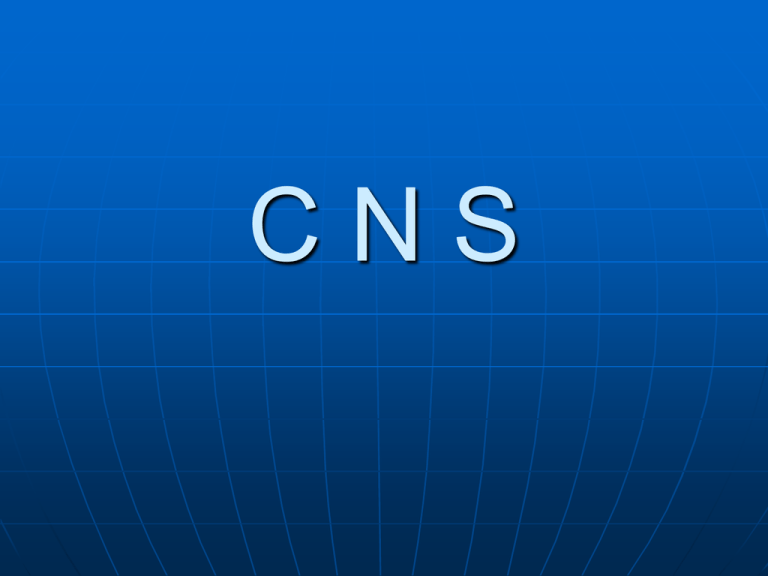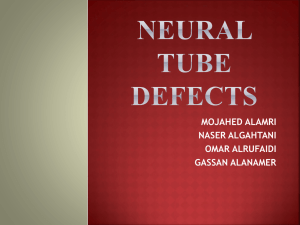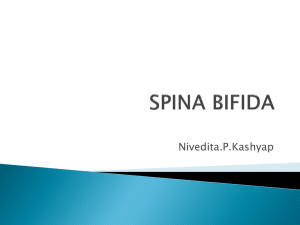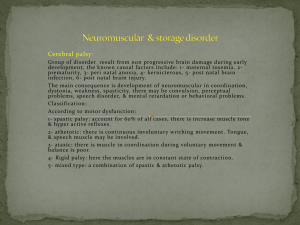CNS1
advertisement

CNS a. b. c. The cephalic end shows three dilatations– the primary brain vesicles. Prosencephalon or forebrain. Mesencephalon or midbrain. Rhombencephalon or hindbrain. Two flexures are formed – a. Cervical flexure at the junction of the hindbrain and the spinal cord b. Cephalic flexure located in the midbrain region. c. Pontine flexture at middle of rhombencephalon. Prosencephalona. Telencephalon or endbrain. Forms primitive cerebral hemispheres & Corpus striatum. b. Diencephalon-optic vesicles, thalamus, hypothalamus, pars nervosa of hypophysis cerebri. Mesencephalon Mid brain. Rhombencephalon – a.Metencephalon Pons and cerebellum b. Myelencephalon Medulla oblongata The lumen of the spinal cord is continuous with that of the brain vesicles. The cavity of the rhombencephalon is known as fourth ventricle. Cavity of the diencephalon –third ventricle Cavity of the cerebral hemisphereslateral ventricles. The third and fourth ventricles are connected to each other through the lumen of the mesencephalon. This lumen becomes very narrow and is then known as the aqueduct of Sylvius. The lateral ventricles communicate with the third ventricle through the Interventricular Foramina of Monro. Spina bifida Embryologic failure of fusion of one or more vertebral arches; subtypes of spina bifida are based upon degree and pattern of deformity associated with neuroectoderm involvement. Spina bifida occulta spina bifida in which there is a spinal defect, but no protrusion of the cord or its membrane, although there is often some abnormality in their development. Meningocele Protrusion of the membranes of the brain or spinal cord through a defect in the skull or spinal column. Meningomyelocele Protrusion of the spinal cord and its membranes through a defect in the vertebral column. Rachischisis Embryologic failure of fusion of vertebral arches and neural tube with consequent exposure of neural tissue at surface; spina bifida cystica with myelocele or myeloschisis. Arnold - Chiari malformation malformed posterior fossa structures resulting from caudal traction and displacement of the rhombencephalon caused by tethering of the spinal cord; may or may not be accompanied by spina bifida and associated anomalies such as meningomyelocele. Meningoencephalocele A protrusion of the meninges and brain through a congenital defect in the cranium, usually in the frontal or occipital region. Anencephaly Congenital defective development of the brain, with absence of the bones of the cranial vault and absent or rudimentary cerebral and cerebellar hemispheres, brainstem, and basal ganglia. Hemicephalia or Partial anencephaly Congenital failure of the cerebrum to develop normally; usually the cerebellum and basal ganglia are represented at least in rudimentary form. Hydrocephalus A condition marked by an excessive accumulation of fluid resulting in dilation of the cerebral ventricles and raised intracranial pressure; may also result in enlargement of the cranium and atrophy of the brain. Congenital hydrocephalus or Primary hydrocephalus hydrocephalus due to a developmental defect of the brain.











